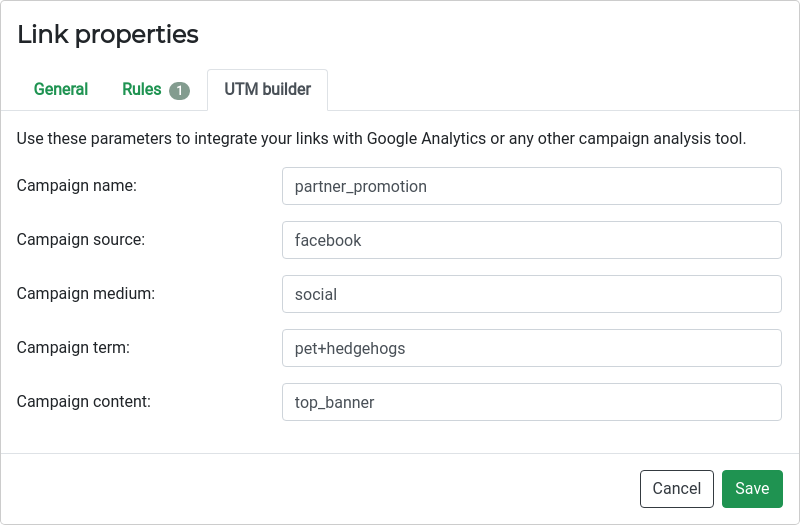Use Them Man! UTM parameters and their friends
UTM parameters
are ubiquitous on today’s Internet. You must have seen those awkward-looking tokens like utm_source and utm_medium in URLs you came across.
They are so popular that they’ve become a de-facto standard for link analytics and performance tracking. That is, despite the fact hardly anyone knows what “UTM” stands for — and no, that’s not “Use Them Man”.

U for Urchin
UTM actually means “Urchin Tracking Module”, it was a software product back in the day, which is now merged into Google Analytics.
UTM parameters, sometimes also called UTM tags, are five codes that can be added to URLs in order to improve link tracking and link analytics. These five codes include:
| UTM parameter | Required | Meaning |
|---|---|---|
utm_source | Yes | Campaign source, like facebook or instagram |
utm_medium | Yes | Campaign medium, for example, email or social |
utm_campaign | Yes | Name of the campaign, such as partner_promotion |
utm_term | No | Campaign term used for keyword or search term tracking |
utm_content | No | Specific element clicked by user, e.g. banner |
What’s in it for me?
The exciting thing about those boring utm_* parameters is how they integrate with Google Analytics.
The information they contain gets collected and neatly arranged so that you can view and compare your link’s performance by campaign, source, medium and so on. These same values can also be used for filtering.
UTM builder
As of today, anyone can add UTM parameters to their links, using our UTM builder. You can find it in the Link properties dialog:

Modifying the parameters will update the Target URL accordingly, keeping other parameters, if any, intact. And vice versa, every change to the Target URL will be reflected in the UTM builder.
This feature is available to every registered user, including those on the Free service plan.
Enjoy, and may the Urchin be with you!
Tags: blog, free feature, Google Analytics, link analytics, link statistics, redirect, short link, short URL, URL, UTM Builder, UTM parameters, UTM tags
